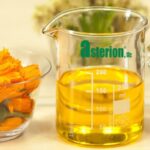Should we be content with letting cleaning baths get contaminated with oils and soils? We can just dump and make up a fresh bath, right? You could go that route, but beware; without proper cleaning blisters, poor adhesion, pitting, peeling, and flaking may start to rear their ugly heads before a fresh bath can be made. There is a better answer. What would happen if agitation and filtration systems were added to a cleaner? The filters remove bulk soils and particulates as they are being introduced to the bath. An agitation system mechanically sweeps particulate matter away from the … [Read more...]
Perfecting your Phosphate Line
Spotty parts. These two words pretty much sum it up when issues arise with your phosphate cleaning line. Incomplete coverage ---or ---no coverage at all is another sign that your phosphate line is negatively impacting your shop’s efficiency and your company’s profitability. There is a cure. Incomplete Coverage - Substrate: Incomplete surface coverage typically indicates adjustments to the pretreatment process may be necessary or that there are variations in substrate manufacturing that need to be addressed. Substrate issues should be reviewed with the supplier to confirm consistent … [Read more...]
Cleaning Leaded Brass
If you have ever tried plating over leaded brass, you’ve most likely experienced the dreaded lead soap at some point. So, you may be asking… What is Lead Soap? It’s just what you’d expect it to be --- saponified lead. How can you tell if you have lead soap? Telltale signs of lead soap include either cloudiness in the deposit or a dark appearance in one particular current density area. Is Lead Soap Difficult to Clean? You betcha! Metallic soaps are typically difficult to remove from a part’s surface, with lead soap being one of the most stubborn. How is Lead Soap Formed? … [Read more...]
What’s the Best Cleaning Method?
How many times have you asked, “What’s the best cleaning method?” Most likely, more times than you may be willing to readily admit without creating a furrowed brow or other visible sign of discontent. More often than not, you probably received a highly complex response that thrashed around operating parameters, rack or barrel, tank construction, bath make-up …and the list goes on. This same question has been and continues to be posed to Team Asterion on numerous occasions. The good news is that there is a simple answer when water soluble-based oils are used in the manufacturing process. No … [Read more...]
White Paper Details How Water Selection Impacts the Plating Process
INDIANAPOLIS, October 17, 2016 – Asterion, LLC has published the white paper, “Water and the Plating Process.” Authored by Asterion Technical Sales Engineer, Jake Fisher, the paper details how water plays an integral and critical role in the plating process. Specifically, the paper offers guidance on the selection and use of three types of water: hard, soft and purified. The document details how each interacts in distinct and important ways when used in a rinse tank or process solution. The impact of Total Dissolved Solids (TDS) contained within each water type, as well as cost … [Read more...]
Separate and Different Cleaning Baths Bring Best Results
“Why can’t I use the same bath for both soak cleaning and electrocleaning?” is a question that is often asked, but rarely addressed with one definitive answer. To do so, would be putting your plating line in peril. Sure, sometimes you can employ the same bath for both, but this is seldom an acceptable answer. Other times you can use the same chemistry, but in different concentrations in separate tanks. However, most often dedicated tanks with different soak cleaner and electrocleaner chemistries are required. Here’s why… The soak cleaner’s job is to remove excess oils and … [Read more...]
Removing Sand Residue from Casted Parts: Cleaner Selection Is Critical
Surface finishers are continually challenged with selecting the right cleaners to remove sand residue on casted parts. The main reason for this is that sand --- typically a silicon-based compound--- is insoluble in water, which causes the detergency of the cleaners to be lost. Detergency is what allows the cleaners to pull soils into the solution and remove them from the part’s surface. The sand (or silicon) itself does not affect the detergency of the cleaner; it simply isn’t acted upon by it. With sand residue, good solution movement is critical, as you must rely on mechanical forces to … [Read more...]
Filtration, Carbon Treatment and Maintenance of Plating Baths
By Doug Trageser In our most recent series “Water and the Plating Process”, we focused on how water quality can affect the plating process starting with cleaners and rinses all the way to the final finish. As an experienced finisher knows, even with “clean” water ahead of the plating system, the plating baths need regular cleaning in order to maintain high-quality finishes and a steady state operation. Filtration Arguably, the most important detail to keeping a plating line clean is filtration. A lack of good filtration can lead to many issues, such as shelf roughness, pitting and … [Read more...]
Carbonates in the Plating Bath
If you have an alkaline plating bath, then you are likely familiar with carbonates. Those of you who still have or have had cyanide plating baths are all too familiar with carbonates. In this article, we will discuss what a carbonate is, how it is formed in a plating solution, and what it does to the plating bath. We will also visit a couple of ways of dealing with these when they get too high. What Is a Carbonate? First things first, what is a carbonate? A carbonate is a salt of the anion CO32-. That’s all well and good for those of us who stayed awake in chemistry, but for the rest of us, … [Read more...]
Water and the Plating Process : Part 2
In the first part of this three-part series, we discussed water and the integral part it plays in the plating process. We are talking about how the different types of water impact the plating process in different ways. In this post, we will talk about soft water and how it affects different process tanks. Soft Water Soft water, much like hard water, contains cations. However, these cations are different from hard water cations. Soft water typically contains Na+ (Sodium) and K+ (Potassium) rather than Ca2+ (Calcium) and Mg2+ (Magnesium). Let’s take a look at how these different cations affect … [Read more...]




